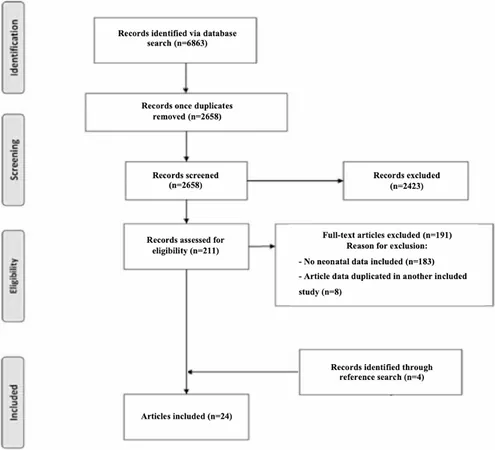
Unmasking Melioidosis in Neonates: A Systematic Review of an Underrecognized Threat
2025-08-01
Author: Wei
The Hidden Danger of Melioidosis
Melioidosis is a tropical infectious disease caused by the gram-negative bacteria Burkholderia pseudomallei, with a global death toll rivaling that of measles. Although pediatric cases account for a small fraction, estimated at 5-15%, this figure may be misleading, particularly among newborns, where reports are scarce.
A Growing Concern Worldwide
Endemic to Southeast Asia and Northern Australia, melioidosis is gaining recognition in new regions—including South America, Africa, and China—over the past decade, raising alarms about its rapid spread and the urgent need for better understanding.
Symptoms and Presentation: A Broader Spectrum
While melioidosis can range from localized skin infections to severe sepsis, children, particularly neonates, display different symptoms than adults. Many cases in neonates present with severe forms of the disease, such as pneumonia and sepsis, rather than localized infections commonly observed in older age groups.
Diagnosis: A Race Against Time
Diagnosing melioidosis is fraught with challenges; bacterial cultures take time and are often misidentified. In critical cases, rapid intervention is crucial, as nearly half of the patients suffering from septic shock may succumb within 48 hours of hospital admission.
An Unexplored Territory: Neonatal Cases
Despite a striking neonatal mortality rate of approximately 70%, research on melioidosis in this vulnerable group remains scant. Previous reviews have lacked high-quality evidence, highlighting a significant gap in our understanding of the disease.
The First In-Depth Review of Neonatal Melioidosis
This study presents the first systematic review, compliant with PRISMA guidelines, focusing solely on neonatal melioidosis. By analyzing existing literature, we aim to shed light on transmission methods, clinical presentations, treatment options, and outcomes in this high-risk population.
Searching for Answers: Methodology
Our thorough literature search included multiple databases and followed exacting standards. Only culture-confirmed cases of melioidosis in neonates were included, resulting in a final sample of 26 cases from 24 studies.
Demographic Insights and Transmission Routes
The review identified a higher prevalence of male cases and noted that vertical transmission could be more common than previously believed, with some infants becoming symptomatic at birth. However, a majority of cases had unconfirmed modes of transmission.
Clinical Presentation and Mortality Rates
With most cases exhibiting respiratory distress or fever, the mortality rate of 65% in our sample starkly contrasts with lower mortality rates in older children. Rapid disease progression in neonates mandates prompt recognition and treatment.
Treatment Challenges and Outcomes
Surprisingly, only a fraction of neonates received guideline-recommended antibiotics during treatment. Out of those who did, half succumbed, underscoring the bleak realities of managing this dangerous infection in such a fragile population.
Recommendations for Future Research and Awareness
To combat the threat of melioidosis in neonates, ongoing surveillance and research are essential. Future efforts should focus on larger, multi-center studies to build a comprehensive understanding. Increased clinician awareness and rapid diagnostic capabilities are urgent needs in addressing this significant clinical challenge.
Conclusion: A Call to Action
Melioidosis poses a pressing, yet largely ignored, threat to neonatal health. As our review highlights, the mortality rate is alarmingly high, stressing the need for targeted research and intervention strategies to protect these vulnerable patients. Prompt recognition and treatment, coupled with improved diagnostic methods, could drastically alter outcomes for neonates suffering from this devastating disease.



 Brasil (PT)
Brasil (PT)
 Canada (EN)
Canada (EN)
 Chile (ES)
Chile (ES)
 Česko (CS)
Česko (CS)
 대한민국 (KO)
대한민국 (KO)
 España (ES)
España (ES)
 France (FR)
France (FR)
 Hong Kong (EN)
Hong Kong (EN)
 Italia (IT)
Italia (IT)
 日本 (JA)
日本 (JA)
 Magyarország (HU)
Magyarország (HU)
 Norge (NO)
Norge (NO)
 Polska (PL)
Polska (PL)
 Schweiz (DE)
Schweiz (DE)
 Singapore (EN)
Singapore (EN)
 Sverige (SV)
Sverige (SV)
 Suomi (FI)
Suomi (FI)
 Türkiye (TR)
Türkiye (TR)
 الإمارات العربية المتحدة (AR)
الإمارات العربية المتحدة (AR)